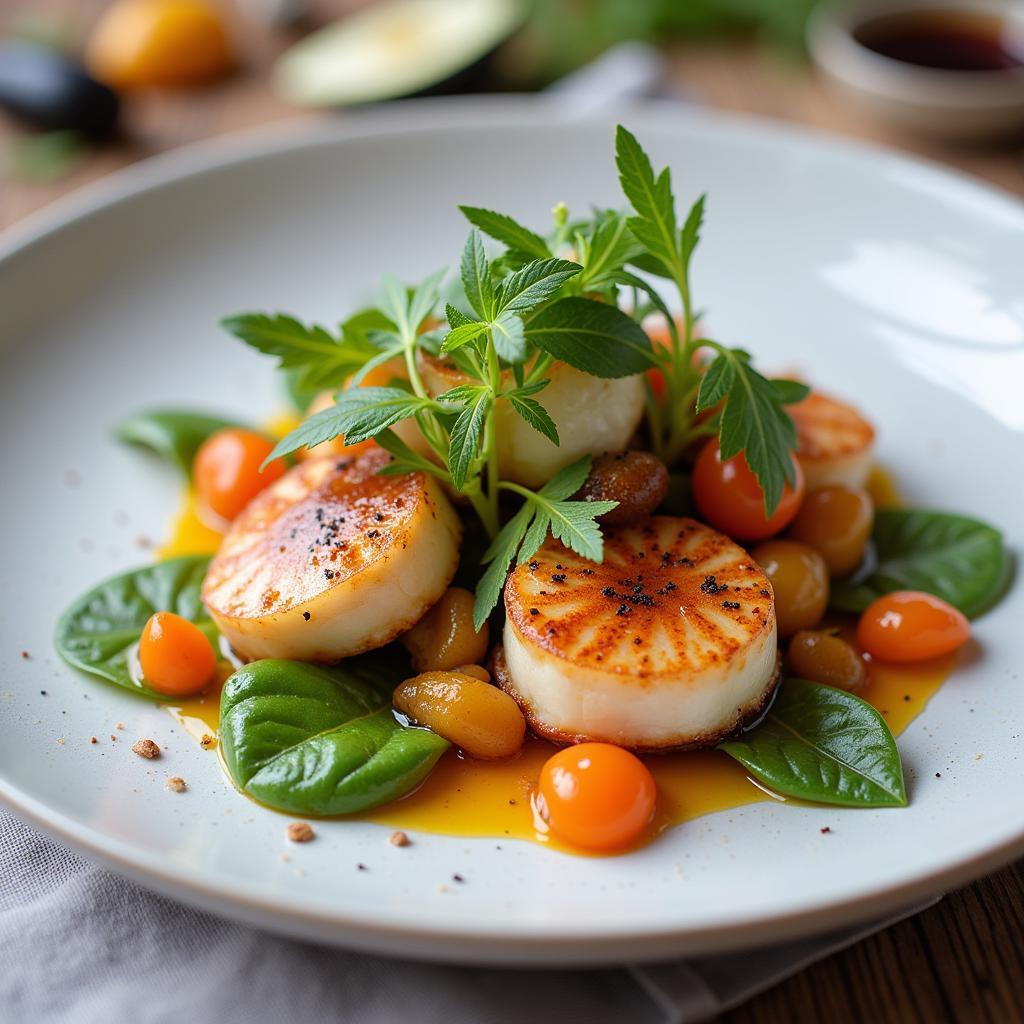Is Norwegian food truly bad? This is a question that pops up surprisingly often, and one that deserves a thorough, and tasty, exploration. It’s time to debunk the myth and dive into the delicious reality of Norwegian cuisine.
Beyond Lutefisk: Exploring the Diversity of Norwegian Food
While some might point to lutefisk (dried cod preserved in lye…yes, lye) as the epitome of Norwegian cuisine, that’s like judging all American food based on deep-fried butter. The truth is, Norwegian food, like its stunning landscapes, is diverse and complex. It’s a reflection of its history, geography, and cultural influences.
The Foundation of Norwegian Flavors: Fresh and Local
Norway’s long coastline and pristine waters provide an abundance of fresh seafood. Think succulent salmon, delicate cod, and plump prawns, often prepared simply to let the natural flavors shine. Inland, fertile valleys and mountains yield an array of seasonal produce, berries, and wild game. This emphasis on fresh, local ingredients forms the foundation of traditional Norwegian cooking.
From Simple Fare to Gourmet Delights: A Culinary Journey
Norwegian food isn’t just about boiled potatoes and fish (although those are done exceptionally well). It’s a cuisine that has evolved, incorporating global influences while staying true to its roots. Think innovative dishes featuring reindeer, cloudberries, and brown cheese, often presented with a modern, minimalist aesthetic.
Traditional Norwegian Dishes: A Taste of History
Dishes like fårikål (mutton stew with cabbage), pinnekjøtt (salted and dried lamb ribs), and kjøttkaker (Norwegian meatballs) are deeply rooted in Norwegian culinary heritage. These hearty, flavorful dishes reflect the practicality and resourcefulness of traditional Norwegian cooking. They tell stories of long winters, close-knit communities, and a deep respect for the land.
“Norwegian food is about embracing the seasons and celebrating the bounty of nature,” says acclaimed Oslo chef, Lars Magnus Eriksen. “It’s about simple, honest flavors, prepared with care and attention.”
Why the Misconception? Unpacking the “Bad Rap”
So, if Norwegian food is so diverse and delicious, why the lingering perception of it being “bad”? Perhaps it’s a combination of factors. Exposure to poorly prepared lutefisk, a lack of familiarity with the broader culinary landscape, or simply outdated stereotypes all contribute to the misunderstanding.
Embracing the New Nordic Cuisine: A Culinary Revolution
 Modern Norwegian Cuisine Plating
Modern Norwegian Cuisine Plating
In recent years, the New Nordic Cuisine movement has taken the culinary world by storm. Norwegian chefs are at the forefront of this movement, pushing boundaries with innovative techniques, foraging for wild ingredients, and creating dishes that are both visually stunning and incredibly flavorful. This contemporary approach has helped to reshape the global perception of Norwegian food.
A Culinary Adventure Awaits: Discover the True Flavors of Norway
“The best way to understand Norwegian food is to experience it firsthand,” adds Chef Eriksen. “Come with an open mind and a curious palate, and you’ll be surprised by what you discover.”
So, is Norwegian food bad? Absolutely not. It’s a vibrant, evolving cuisine that offers something for everyone. From traditional comfort food to cutting-edge culinary creations, Norway’s food scene is ripe for exploration.
FAQ: Your Norwegian Food Questions Answered
- What is the most popular dish in Norway? Salmon, prepared in various ways, remains a perennial favorite.
- What are some traditional Norwegian desserts? Krumkake, lefse, and riskrem are popular choices.
- Where can I find authentic Norwegian food? Local markets, traditional restaurants, and even some home kitchens offer the best experiences.
- Is Norwegian food expensive? Dining out can be pricey, but local markets offer affordable options for exploring Norwegian flavors.
- What is the best time of year to experience Norwegian cuisine? Each season offers unique culinary delights, but summer and autumn are particularly bountiful.
- What drinks are typically served with Norwegian food? Aquavit, local beer, and coffee are common accompaniments.
- Are there any vegetarian options in Norwegian cuisine? While traditionally meat and fish-centric, vegetarian options are increasingly available, often featuring seasonal vegetables and grains.
Other Articles You Might Enjoy:
- Exploring the Seafood of Norway
- A Guide to Traditional Norwegian Baking
- The New Nordic Cuisine Movement: A Revolution in Flavor
Need support? Contact us at Phone: 02437655121, Email: minacones@gmail.com or visit us at 3PGH+8R9, ĐT70A, thôn Trung, Bắc Từ Liêm, Hà Nội, Việt Nam. We have a 24/7 customer support team.